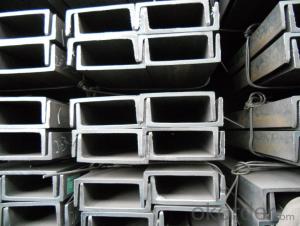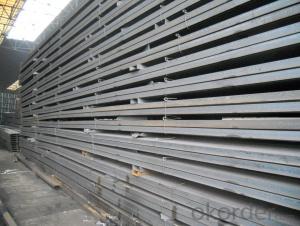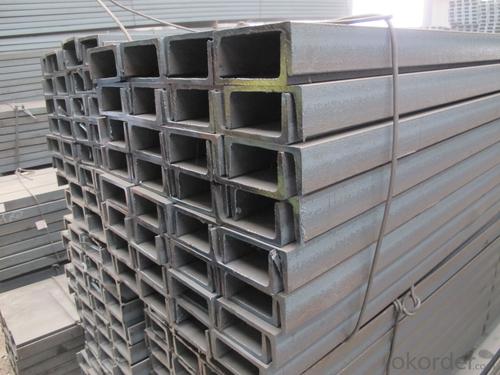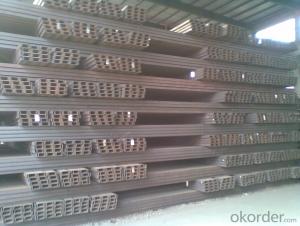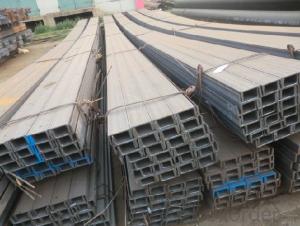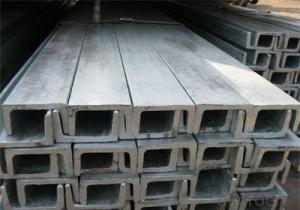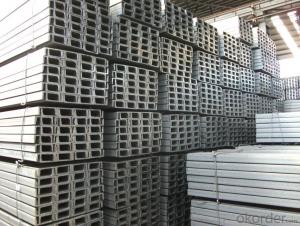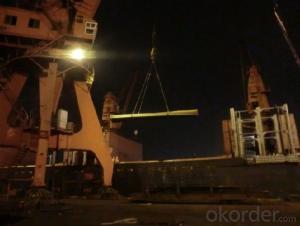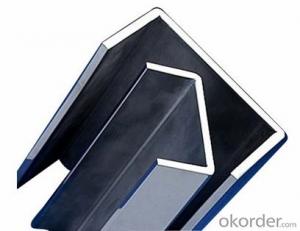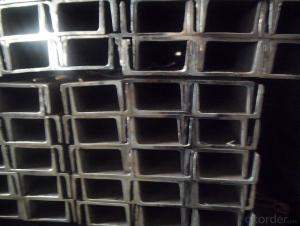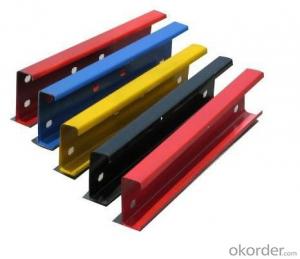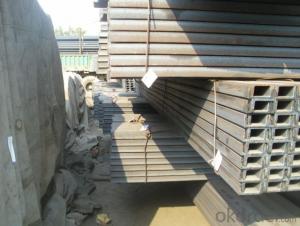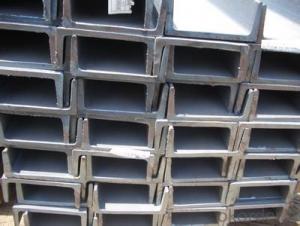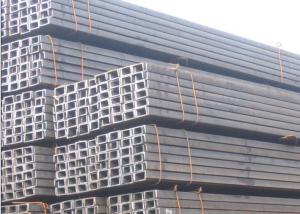GB Standard Steel U Channels of High Quality for Warehouses
- Loading Port:
- Shanghai
- Payment Terms:
- TT or LC
- Min Order Qty:
- 25 m.t.
- Supply Capability:
- 200000 m.t./month
OKorder Service Pledge
OKorder Financial Service
You Might Also Like
Product Description:
OKorder is offering GB Standard Steel U Channels of High Quality for Warehouses at great prices with worldwide shipping. Our supplier is a world-class manufacturer of steel, with our products utilized the world over. OKorder annually supplies products to European, North American and Asian markets. We provide quotations within 24 hours of receiving an inquiry and guarantee competitive prices.
Product Applications:
GB Standard Steel U Channels of High Quality for Warehouses are ideal for structural applications and general fabricating. The steel u channel can be applied to construction of warehouses, workshops, sport stadiums and car parks etc. In details, the steel u channel belongs to carbon structural steel which is applied to in the field of construction and machinery. The steel u channel is usually used for arch-itechtural structure, and they could be welded in order to support or hang a vari-ety of facilities. They are also usually used in combination with I beam. Generally,the steel u channel must possess perfect welding property, riveting property and mechanical property and so on.
Product Advantages:
GB Standard Steel U Channels of High Quality for Warehouses are durable, strong, and resists corrosion. And they are newly produced.
Main Product Features:
· Premium quality
· Prompt delivery & seaworthy packing (7-10 days after receiving deposit)
· Corrosion resistance
· Can be recycled and reused
· Mill test certification
· Professional Service
· Competitive pricing
Product Specifications:
1.We supply high quality MS Channel at reasonable price, including Chinese standard, Japanese standard and so on.
Standard | GB/JIS |
Material Grade | Q235,SS400 |
Technique: | Hot Rolled |
Sizes as per chinese standard: | 50*37*4.5mm - 300*89*11.5mm |
Sizes as per japanese standard: | 50*25*3mm – 200*80*7.5mm |
Length: | 6meter, 9meter, 12meter |
Note: 1.we are also competent to provide our customers other MS Channel based on other sizes according to customer’s requirements.
2. The length of our ms channel could be cut into other meters as per customer’s requirements. For example, the channel in 6meters could be cut into 5.8meters in order to be fit in the 20ft container.
2. The detailed sections of MS Channel as per GB standard.are shown in the table-1:
GB U CHANNEL | Standard | Sectional | Dimension |
| Mass: |
(mm) | (mm) | (mm) | (mm) | ||
50X37 | 50 | 37 | 4.50 | 7.0 | 5.438 |
63X40 | 63 | 40 | 4.80 | 7.5 | 6.634 |
80x43 | 80 | 43 | 5.00 | 8.0 | 8.045 |
100x48 | 100 | 48 | 5.30 | 8.5 | 10.007 |
120x53 | 120 | 53 | 5.50 | 9.0 | 12.059 |
140x58 | 140 | 58 | 6.00 | 9.5 | 14.535 |
140x60 | 140 | 60 | 8.00 | 9.5 | 16.733 |
160x63 | 160 | 63 | 6.50 | 10.0 | 17.240 |
160x65 | 160 | 65 | 8.50 | 10.0 | 19.752 |
180x68 | 180 | 68 | 7.00 | 10.5 | 20.174 |
180x70 | 180 | 70 | 9.00 | 10.5 | 23.000 |
200x73 | 200 | 73 | 7.00 | 11.0 | 22.637 |
200x75 | 200 | 75 | 9.00 | 11.0 | 25.777 |
220x77 | 220 | 77 | 7.00 | 11.5 | 24.999 |
220x79 | 220 | 79 | 9.00 | 11.5 | 28.453 |
250x78 | 250 | 78 | 7.00 | 12.0 | 27.410 |
250x80 | 250 | 80 | 9.00 | 12.0 | 31.335 |
250x82 | 250 | 82 | 11.00 | 12.0 | 35.260 |
280x82 | 280 | 82 | 7.50 | 12.5 | 31.427 |
280x84 | 280 | 84 | 9.50 | 12.5 | 35.823 |
280x86 | 280 | 86 | 11.50 | 12.5 | 40.219 |
300x85 | 300 | 85 | 7.50 | 13.5 | 34.463 |
300x87 | 300 | 87 | 9.50 | 13.5 | 39.173 |
300x89 | 300 | 89 | 11.50 | 13.5 | 43.883 |
Table-1
3. The chemical composition of HR Channel Steel according to Q235B is shown in Table-2.
Alloy No | Grade | Element(%) | ||||
C | Mn | S | P | Si | ||
Q235 | B | 0.12-0.20 | 0.3-0.7 | ≦0.045 | ≦0.045 | ≦0.3 |
Table-2
Note: we are able to present our customers relevant SGS test report for chemical composition of HR Channel Steel.
4. The mechanical property of HR Channel Steel according to Q235B is shown in Table-3-1 and Table-3-2
Alloy No | Grade | Yielding Strength Point(Mpa) | |||
Thickness(mm) | |||||
≦16 | >16-40 | >40-60 | >60-100 | ||
≧ | |||||
Q235 | B | 235 | 225 | 215 | 205 |
Table-3-1
Alloy No | Grade | Tensile Strength(Mpa) | Elongation After Fracture(%) | |||
Thickness(mm) | ||||||
≦16 | >16-40 | >40-60 | >60-100 | |||
≧ | ||||||
G235 | B | 375-500 | 26 | 25 | 24 | 23 |
Table-3-2
Note: we are able to present our customers relevant SGS test report for mechanical property of MS Channel as customer’s request.
FAQ:
Q1: Why buy GB Standard Steel U Channels of High Quality for Warehouses beams for Construction of Warehouses from OKorder.com?
A1: All products offered byOKorder.com are carefully selected from China's most reliable manufacturing enterprises. Through its ISO certifications, OKorder.com adheres to the highest standards and a commitment to supply chain safety and customer satisfaction.
Q2: How do we guarantee the quality of our products?
A2: We have established an advanced quality management system which conducts strict quality tests at every step, from raw materials to the final product. At the same time, we provide extensive follow-up service assurances as required.
Q3: How soon can we receive the product after purchase?
A3: Within three days of placing an order, we will begin production. The specific shipping date is dependent upon international and government factors, but is typically 7 to 10 workdays.
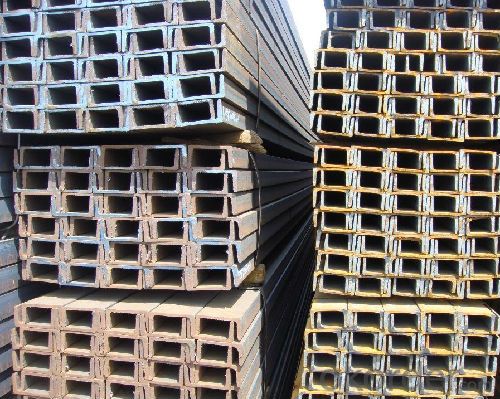
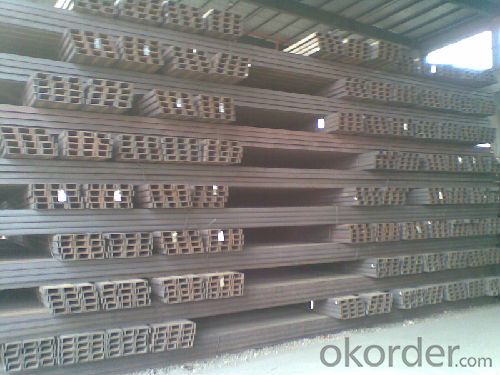
- Q: Can steel channels be used in earthquake-resistant buildings?
- Yes, earthquake-resistant buildings can utilize steel channels. Steel channels are widely utilized in the construction industry due to their durability and high strength. In order to withstand the lateral forces produced during an earthquake, it is imperative to have a structural system that is capable of withstanding such forces. Steel channels are an ideal choice for earthquake-resistant construction as they effectively distribute and dissipate these forces. In earthquake-resistant buildings, steel channels offer numerous advantages. Firstly, they possess exceptional load-bearing capacity, making them capable of supporting heavy loads and resisting the forces exerted during an earthquake. Secondly, they have a high modulus of elasticity, enabling them to deform under stress and then revert to their original shape once the stress is relieved. This flexibility aids in preventing brittle failure and allows the structure to absorb and disperse energy during an earthquake. Moreover, steel channels exhibit high ductility, which is vital in seismic design. Ductility refers to a material's ability to undergo substantial deformations without fracturing. During an earthquake, steel channels can absorb and disperse energy by undergoing plastic deformation, thereby minimizing overall damage to the structure. Furthermore, steel channels offer the advantage of easy fabrication and installation, making them a cost-effective option for earthquake-resistant construction. They are readily available in various sizes and shapes, allowing for design flexibility. Nevertheless, it is important to note that relying solely on steel channels is inadequate to ensure complete earthquake resistance. The overall structural design, including connections, bracing systems, and foundation, should be thoroughly considered and designed by a qualified structural engineer to meet the specific seismic requirements of the region. Building codes and regulations also play a critical role in guaranteeing the safety and resilience of earthquake-resistant buildings.
- Q: What are the different methods for protecting steel channels from water intrusion?
- There are several methods for protecting steel channels from water intrusion. One common method is to apply a waterproof coating or sealant on the surface of the channels. This creates a barrier that prevents water from penetrating into the steel. Another method is to use weatherproof gaskets or seals between the joints of the channels to ensure a tight and secure fit, preventing water from entering. Additionally, proper drainage systems and slope design can help divert water away from the channels, reducing the risk of water intrusion. Regular inspections and maintenance are also crucial to identify and address any potential vulnerabilities or damages that could lead to water penetration.
- Q: Such questions. Ask an expert to help advise!!
- Double story building, intermediate layer with channel steel and cast in place each has advantages and disadvantages, the following detailed description:1 、 cast-in-placeAdvantages: strong, relatively sound insulationDisadvantages: self importantMethods: in the load-bearing wall planting steel, tied with steel, formwork, pouring 10~12cm, waiting for about 28 days molding (summer time is slightly shorter)
- Q: Can steel channels be used for fencing applications?
- Yes, steel channels can be used for fencing applications. Steel channels are strong and durable, making them suitable for various fencing purposes. They can be used to create the framework for a fence, providing stability and support. Steel channels can also be used as posts or rails in fencing systems, offering strength and rigidity. Additionally, steel channels can be easily welded together, allowing for customization and the creation of different fencing designs. Overall, steel channels provide a reliable and long-lasting option for fencing applications.
- Q: What are the maximum lengths available for steel channels?
- The maximum lengths available for steel channels can vary depending on the manufacturer and the specific type of channel being used. However, standard lengths typically range from 20 feet to 40 feet. Some manufacturers may offer longer lengths, such as 60 feet or more, depending on the requirements of the project and the capabilities of the manufacturer's equipment. It is important to consult with the manufacturer or supplier to determine the available lengths for the specific steel channel being considered for use.
- Q: Are steel channels suitable for the mining parts manufacturing industry?
- Yes, steel channels are suitable for the mining parts manufacturing industry. Steel channels are commonly used in various industries, including mining, due to their strength, durability, and versatility. They provide structural support and stability, making them ideal for manufacturing mining parts that require a robust and reliable material. The mining industry often deals with heavy-duty equipment, machinery, and components that must withstand harsh conditions and extreme forces. Steel channels offer excellent load-bearing capacity and resistance to impact, making them well-suited for manufacturing parts such as support beams, frames, and brackets used in mining equipment. Moreover, steel channels can be fabricated to meet specific dimensional requirements, allowing manufacturers to create custom-designed parts tailored to the unique needs of the mining industry. They can be easily cut, welded, and shaped into complex forms, enabling the production of intricate mining components. Additionally, steel channels are known for their corrosion resistance, which is crucial in mining environments that often involve exposure to moisture, chemicals, and abrasive materials. This resistance to corrosion helps extend the lifespan of mining parts and reduces the need for frequent replacements or repairs, ultimately improving operational efficiency and reducing costs. Furthermore, steel channels are readily available, making them a cost-effective choice for the mining parts manufacturing industry. The widespread use of steel channels also means that there is a vast amount of expertise and knowledge in working with this material, allowing for efficient production processes and reliable quality control. In conclusion, steel channels are highly suitable for the mining parts manufacturing industry due to their strength, durability, versatility, corrosion resistance, and cost-effectiveness. These qualities make steel channels an ideal choice for producing mining parts that can withstand the demanding conditions and requirements of the mining industry.
- Q: What are the different types of steel channel profiles?
- There are several different types of steel channel profiles, each designed for specific applications and structural needs. Some of the commonly used types include: 1. C Channel: This is a popular type of steel channel profile that has a C-shaped cross-section. It is often used in construction and engineering projects as a structural support or as a frame for various applications. 2. U Channel: Also known as a U-shaped channel, this type has a similar cross-section to the letter "U". It is commonly used in construction, manufacturing, and automotive industries for applications such as framing, bracing, and support. 3. Hat Channel: Hat channels have a distinctive hat-like shape, with a flat bottom and two vertical sides. They are often used in construction for applications such as ceiling and wall framing, as well as in the automotive industry for reinforcing structural components. 4. Box Channel: As the name suggests, box channels have a rectangular or square cross-section. They are frequently used in construction, manufacturing, and engineering projects where strength and rigidity are required. 5. Z Channel: Z channels have a Z-shaped cross-section, with two flanges on opposite sides and a center web connecting them. They are commonly used in construction for applications such as framing, support, and bracing, especially in roofing and cladding systems. 6. Lipped Channel: Lipped channels, also known as lip channels or lip sections, have an additional lip or flange along one side of the channel. This lip provides extra strength and rigidity, making it suitable for applications such as shelving, racking, and structural support. These are just a few examples of the different types of steel channel profiles available. The choice of profile depends on the specific requirements of the project, including load-bearing capacity, structural stability, and overall design considerations.
- Q: How do steel channels perform in acoustic applications?
- Due to their structural properties, steel channels are effective in acoustic applications. The rigidity and strength of steel make it an ideal material for sound barriers and vibration minimization. Constructing walls, partitions, or ceilings with steel channels can help isolate sound and prevent transmission. The dense nature of steel aids in absorbing and dampening sound waves, reducing intensity and preventing reverberation. This is particularly advantageous in noise-sensitive environments like recording studios, theaters, or conference rooms. Additionally, steel channels can be combined with soundproofing materials or insulation to improve their acoustic performance. Adding layers of foam, fiberglass, or acoustic panels to the steel channels further reduces sound transmission and enhances overall acoustic quality. Furthermore, steel channels provide stability and durability, ensuring the integrity of acoustic structures over time. They can withstand heavy loads and offer fire resistance, making them a reliable choice for acoustic applications. However, it is important to note that steel channels alone may not be sufficient for soundproofing in high-noise environments. The effectiveness of steel channels in acoustic applications also depends on factors like space design, construction quality, and the use of additional soundproofing techniques. In conclusion, steel channels play a valuable role in achieving sound control and acoustic performance in various applications. Their strength, rigidity, and sound-dampening abilities make them suitable for creating sound barriers and minimizing noise transmission.
- Q: Are steel channels suitable for use in broadcasting towers?
- Yes, steel channels are suitable for use in broadcasting towers. Steel channels are commonly used in construction due to their strength and durability. Broadcasting towers require materials that can support the weight of the antennas and withstand various weather conditions, including strong winds and seismic activity. Steel channels are capable of providing the necessary structural integrity and stability required for broadcasting towers. Additionally, steel channels can be easily fabricated and assembled, which makes them a cost-effective choice for constructing tall structures like broadcasting towers.
- Q: What are the different methods of strengthening steel channels?
- There exist numerous techniques for reinforcing steel channels, each possessing its own benefits and practical applications. 1. Heat Treatment: A widely utilized approach involves subjecting steel channels to high temperatures and rapidly cooling them through quenching. This process induces a phase change in the steel, resulting in heightened hardness and strength. Its effectiveness lies in enhancing overall strength and wear resistance. 2. Alloying: By introducing specific alloying elements like manganese, chromium, or nickel into the steel, its strength and toughness can be enhanced. This alloying process enables steel channels to withstand heavier loads and resist deformation, making them suitable for applications that require high-strength materials. 3. Cold Working: This method involves mechanically deforming steel channels at room temperature, such as through rolling or drawing. Cold working induces strain hardening, which augments the material's strength and hardness. Cold worked steel channels are commonly employed in construction and structural applications. 4. Shot Peening: Shot peening entails bombarding the surface of steel channels with small metal pellets at high velocities. This process generates compressive residual stresses that fortify the channels and enhance their resistance to fatigue. Shot peening is frequently employed in situations where cyclic loading and fatigue are factors of concern. 5. Carbonitriding: Carbonitriding is a case-hardening process wherein carbon and nitrogen are introduced into the surface layer of steel channels. This results in a hardened outer layer with improved wear resistance, while maintaining a tough and ductile core. Carbonitriding is commonly employed in applications necessitating strength and wear resistance, such as gears and camshafts. 6. Welding: Welding can be employed to strengthen steel channels by creating fusion between the base metal and filler material. This process yields a joint that is as strong as the base metal itself. However, it is essential to adhere to appropriate welding techniques and procedures to ensure the strength and integrity of the joint. These are merely a few of the various methods available for strengthening steel channels. The choice of method relies on the specific requirements of the application, such as desired strength, hardness, wear resistance, and ductility.
Send your message to us
GB Standard Steel U Channels of High Quality for Warehouses
- Loading Port:
- Shanghai
- Payment Terms:
- TT or LC
- Min Order Qty:
- 25 m.t.
- Supply Capability:
- 200000 m.t./month
OKorder Service Pledge
OKorder Financial Service
Similar products
Hot products
Hot Searches
Related keywords

